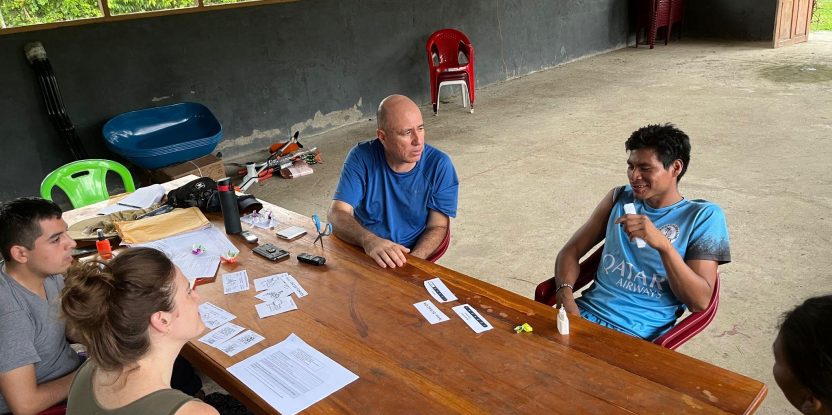
Peru is a pioneer in state-led incentives for forest conservation. In 2010, with the ambitious goal of reducing deforestation of its tropical forests to zero, the Peruvian government—through the Ministry of the Environment—created the National Forest Conservation Program for the Mitigation of Climate Change (PNCB). This initiative sought to contribute to the conservation of forests and fulfil Peru’s commitments to the international community regarding climate change.
A key mechanism was the provision of monetary incentives to support indigenous communities in preserving their forests. These incentives, known as “Conditional Direct Transfers” or TDCs, were rolled out in native communities with land titles across Peru’s Amazon region. They provided funding to support forest patrols, sustainable development investments (such as forest products and agroforestry), and other community-defined priorities.
However, nearly 15 years later, Peru’s deforestation rates remain stubbornly high and efforts to curb forest loss have fallen significantly short of the original targets. TDC recipient communities have seen high dropout and expulsion rates, raising concerns about the program’s long-term sustainability.
In response to these challenges, Michigan State University and the Pontifical Catholic University of Peru initiated an interdisciplinary research collaboration with the PNCB.
This effort, framed within an inter-institutional work agreement, sought to address a crucial question: How can Conditional Direct Transfers be improved to achieve long-term conservation and development outcomes and objectives with replicable, scalable models?
Over 24 months, the research team conducted fieldwork in two Amazonian regions, evaluating TDC implementation practices and assessing the perspectives of key stakeholders, including allied ministries and on-the-ground subnational actors (governmental and non-governmental). In addition, eight case studies were carried out in native communities to identify the conditions contributing to the success of TDCs.
The research identified important contextual and relational factors that influence the program’s effectiveness. Successful outcomes, measured in terms of positive experiences and completed conservation contracts, often hinged on the benefits of community patrolling, a requirement for receiving TDCs.
Many respondents praised the usefulness of the data generated by community patrols and shared by the PNCB as a valuable tool. However, administrative tasks required by community members—such as report writing and compliance with strict accounting procedures— emerged as significant barriers to success and a cause of suspensions in some cases.
Drawing on a diverse set of cases, the research highlights both the crosscutting pitfalls and best practices for similar incentive-based programs. The findings emphasize the need for better coordination among local communities, state and non-state actors to maximize the impacts of incentive investments.
The study’s ten key lessons drawn from the case study are summarized in the open-access paper, Making Conservation Incentives Work for Indigenous People and Local Communities: Insights from Peru with General Recommendations, published as part of the Center for International Forestry Research and the World Agroforestry’s Infobrief series.
__________________________________________________________
For more information, contact:
Lauren T. Cooper // Michigan State University Department of Forestry // ltcooper@msu.edu
Rowenn Beth Kalman // Michigan State University Department of Anthropology // kalmanr1@msu.edu
Cristina Miranda Beas // Pontifical Catholic University of Peru, Department of Social Sciences // c.mirandab@pucp.pe
Deborah Delgado Pugley // Pontifical Catholic University of Peru, Department of Social Sciences // deborah.delgado@pucp.pe
Ciro Alexander Castro Pacheco // Pontifical Catholic University of Peru, Department of Social Sciences ciro.castro@pucp.edu.pe
We want you to share Forests News content, which is licensed under Creative Commons Attribution-NonCommercial-ShareAlike 4.0 International (CC BY-NC-SA 4.0). This means you are free to redistribute our material for non-commercial purposes. All we ask is that you give Forests News appropriate credit and link to the original Forests News content, indicate if changes were made, and distribute your contributions under the same Creative Commons license. You must notify Forests News if you repost, reprint or reuse our materials by contacting forestsnews@cifor-icraf.org.